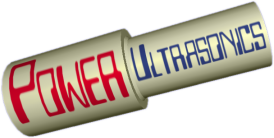Ultrasonics can be used to weld different metals together, without solder and flux or special preparation. The process is different to plastic welding in that the two components are vibrated parallel to the interface. This is a more intuitively logical method of generating friction between them, but frictional heating is not thought to be the prime mechanism of the process - the temperature needed to melt (or even soften) most metals would be very difficult to achieve. Instead the mechanism is thought to be diffusion-bonding: atoms of each part diffuse into the other when the two surfaces are brought together in close contact. The ultrasonics promotes this close contact by breaking down the surface oxide layers, allowing the "raw" metals to make contact.
The process has some limitations. It is only suitable for relatively small components (a prime example is welding connectors to car battery leads) since the power required to weld larger parts would be higher than can practically supplied by this method. Also the process tends to mark and deform the components, since high clamping forces and sonotrodes with serrated working faces must be used to grip the workpiece firmly.
